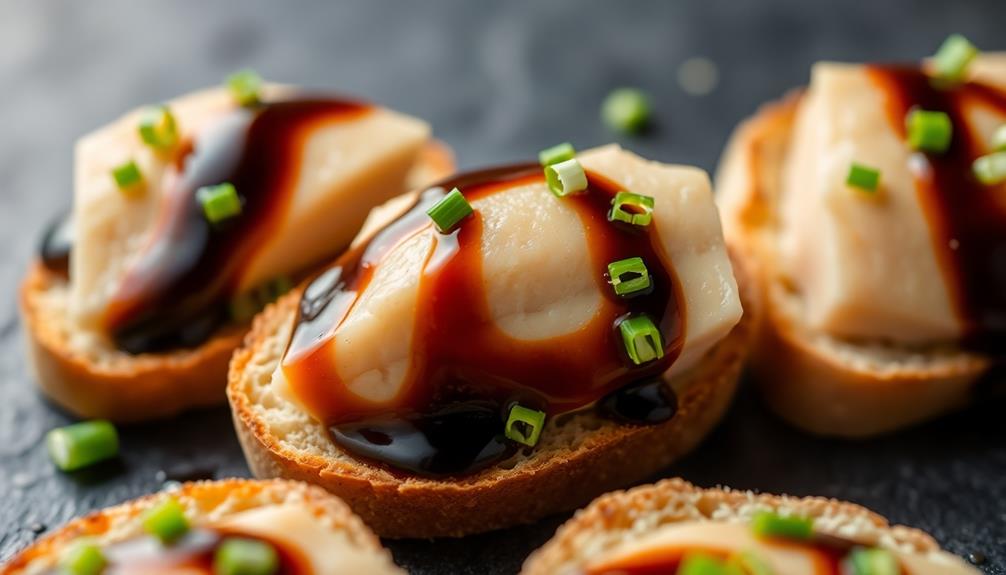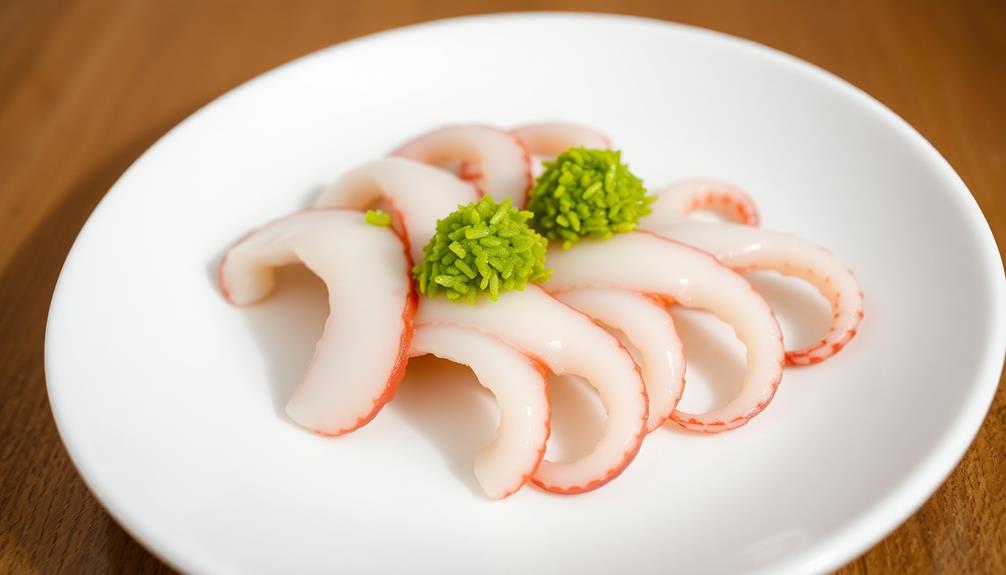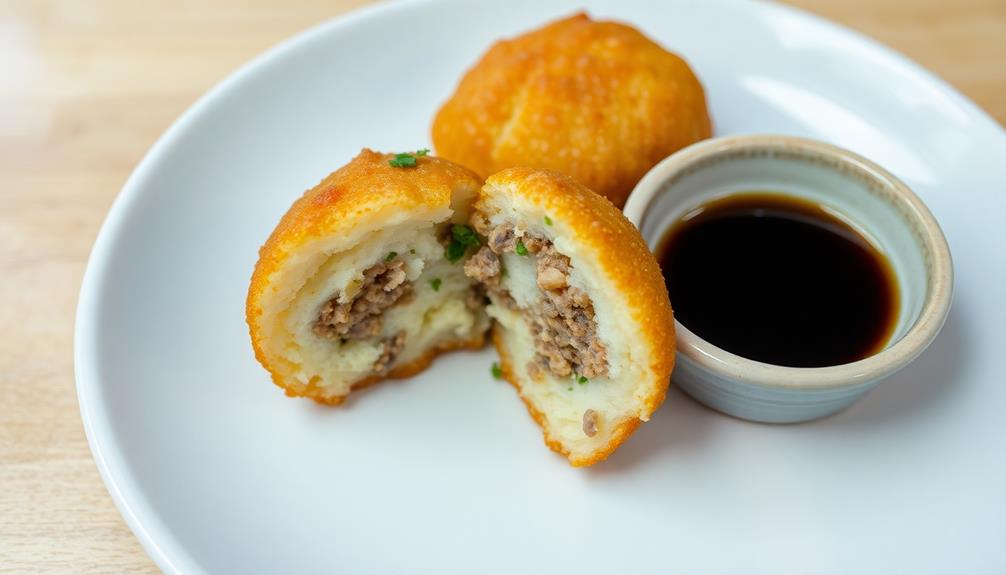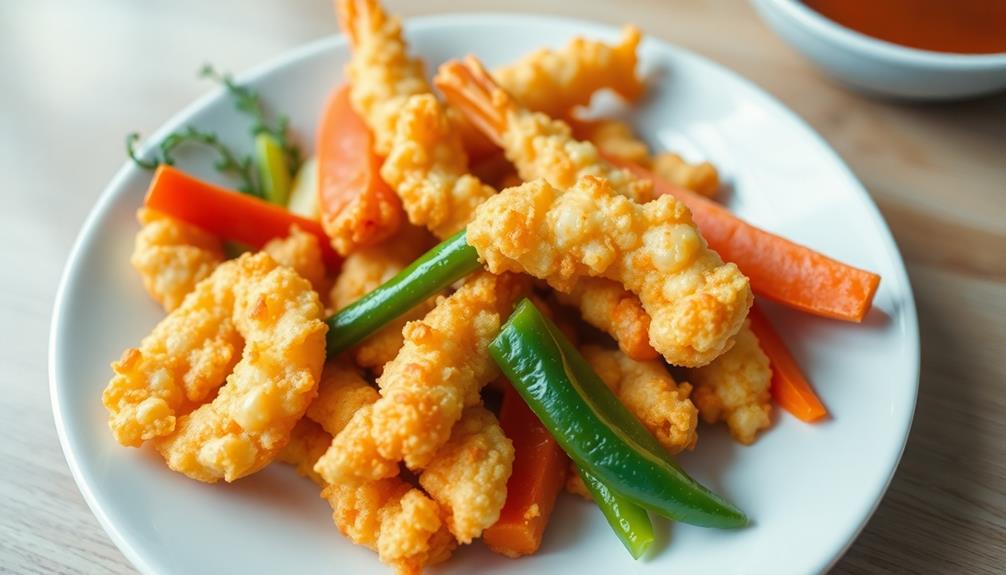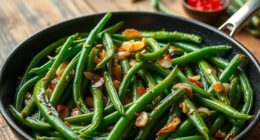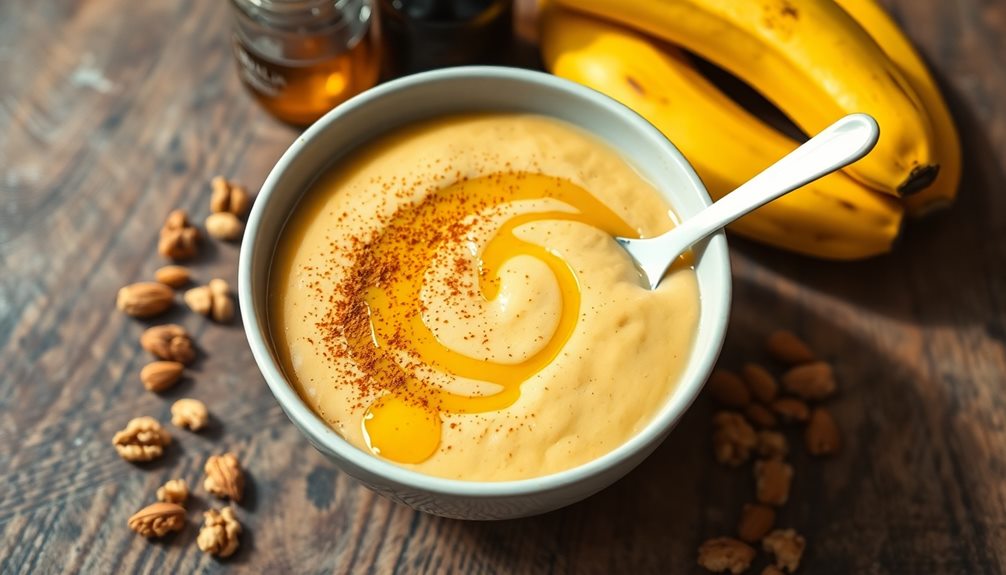Ankimo, or monkfish liver pâté, is a Japanese delicacy you've likely heard of, but perhaps haven't had the pleasure of tasting. This luxurious appetizer boasts a rich, creamy texture and subtle umami flavor that captivates discerning palates. While its origins trace back to the Meiji period, ankimo's transition from a humble byproduct to a sought-after dish reflects its enduring allure. Discover the intriguing history and unique preparation of this culinary treasure, and you just might find yourself craving a taste of this exceptional Japanese specialty.
Key Takeaways
- Ankimo is a Japanese culinary delicacy made from poached and encased monkfish liver, known for its rich flavor and creamy texture.
- Ankimo has gained popularity as a luxurious appetizer, often served chilled and paired with crisp crackers or bread.
- Preparation of Ankimo involves careful cleaning, seasoning, and cooking techniques to maintain the texture and enhance the natural flavors.
- Ankimo is considered a nutritious seafood option, rich in omega-3 fatty acids, vitamins, and minerals, making it a healthy choice.
- Serving Ankimo as a garnish or spread can elevate various dishes, from casual gatherings to elegant events, showcasing its versatility in Japanese cuisine.
History
Ankimo, the delicacy of monkfish liver pâté, has a rich history rooted in Japanese cuisine. Traditionally, the liver was considered a humble byproduct, often discarded or used for pet food. However, resourceful Japanese chefs recognized its potential and began experimenting with ways to transform it into a culinary treasure.
The name "Ankimo" is a combination of the Japanese words for "monkfish" (anko) and "liver" (kimo). This unique dish emerged during the Meiji period (1868-1912), when Japan's culinary landscape was evolving and embracing Western influences.
Chefs found that by gently poaching the monkfish liver and then encasing it in a savory gelatin, they could create a delicate and creamy pâté that quickly gained popularity among the elite and discerning palates.
Today, Ankimo is celebrated as a luxurious and sought-after delicacy, often served as an appetizer or enjoyed as a special treat during festive occasions. Its rich, buttery flavor and smooth texture have earned it a place in the pantheon of Japanese gastronomic wonders.
Recipe
Ankimo, or monkfish liver pâté, is a delicacy in Japanese cuisine. Its rich, creamy texture and subtle flavor make it a sought-after ingredient. While it may seem daunting to prepare, with the right technique, you can enjoy this luxurious dish at home.
Monkfish liver has a delicate balance of flavors, so it's important to handle it with care. The key is to gently poach the liver to preserve its delicate texture and prevent it from becoming grainy or dry.
Ingredients:
- 1 lb monkfish liver, cleaned and trimmed
- 1/4 cup heavy cream
- 2 tbsp unsalted butter
- 1 tsp salt
- 1/4 tsp white pepper
Instructions:
Gently poach the monkfish liver in simmering water for about 10 minutes, or until it's cooked through but still tender. Drain and let cool slightly.
In a food processor, blend the liver, cream, butter, salt, and white pepper until smooth and creamy.
When preparing ankimo, it's important to avoid overcooking the liver, as this can make it tough and dry. Serve the pâté chilled, accompanied by toast points or crackers.
For a touch of elegance, garnish with a drizzle of soy sauce or a sprinkle of chopped chives.
Cooking Steps
First, thoroughly clean the monkfish liver and season it with salt and pepper.
Next, sauté the seasoned liver until it's cooked through.
Step 1. Thoroughly Clean the Monkfish Liver
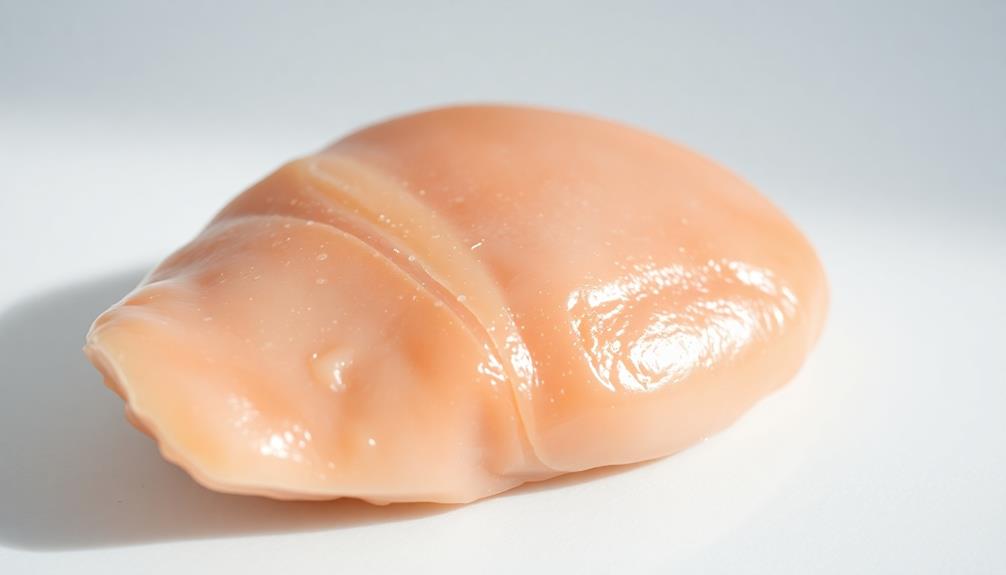
Carefully rinsing the monkfish liver is the initial step in preparing this delicacy. Thoroughly clean the liver under cold, running water, gently rubbing the surface to remove any debris or discoloration.
Pat the liver dry with paper towels, being cautious not to damage the delicate texture.
Next, examine the liver closely, looking for any veins, membranes, or other impurities. Using a sharp knife, carefully trim away any blemishes or undesirable parts, ensuring the liver is pristine.
Dispose of the trimmings properly.
Once the liver is meticulously cleaned, it's ready for the next steps in the recipe. This meticulous preparation is crucial to unlocking the rich, buttery flavor and smooth texture that makes ankimo, or monkfish liver pâté, a true culinary delight.
Step 2. Season With Salt and Pepper
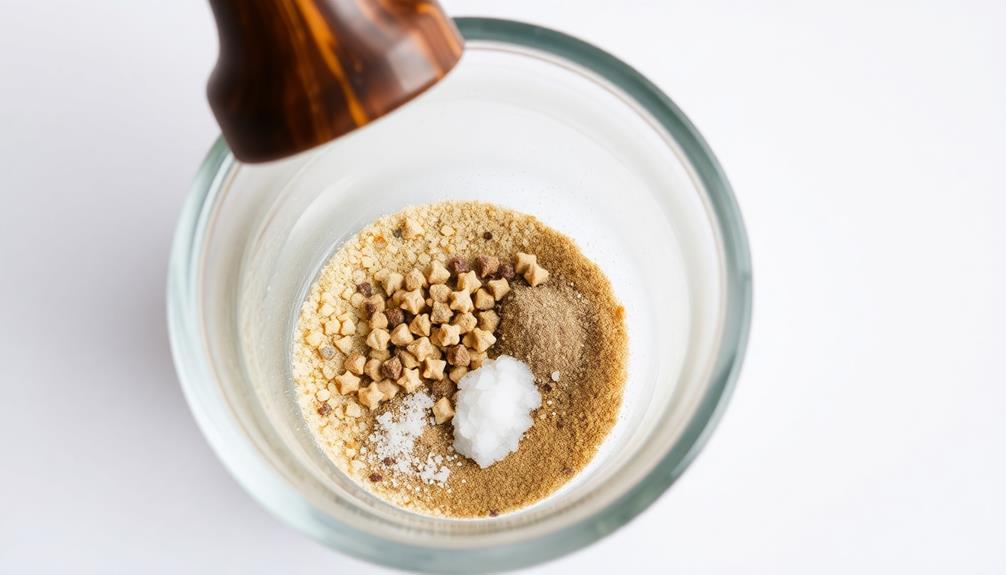
With the monkfish liver clean and ready, you can now season it with salt and pepper.
Begin by sprinkling a pinch of salt over the surface of the liver, distributing it evenly. Next, take a few turns of the pepper mill, grinding fresh black pepper directly onto the liver. Gently rub the salt and pepper into the surface, ensuring the seasoning is well-incorporated.
The amount of salt and pepper you use will depend on personal preference, but as a general guideline, start with a light hand and add more if desired. Remember, you can always add more seasoning, but it's difficult to fix an overly salty or peppery dish.
Taste the liver after seasoning and make any necessary adjustments.
Once the liver is evenly seasoned, it's ready for the next step in the preparation process. With the foundation of flavor established, you can now move on to the cooking or chilling techniques that will transform the monkfish liver into a delectable pâté.
Step 3. Sauté the Monkfish Liver
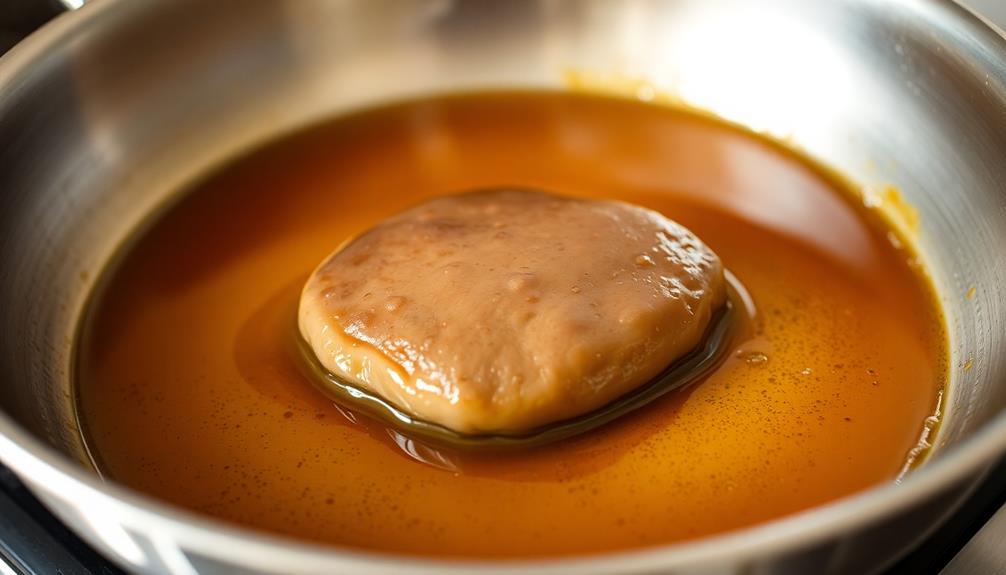
To sauté the monkfish liver, heat a skillet over medium-high heat.
Add a tablespoon of olive oil and swirl to coat the bottom of the pan.
Gently place the monkfish liver in the hot oil and sauté for 2-3 minutes per side, until the exterior is lightly browned and the center is still slightly pink.
Be careful not to overcook, as monkfish liver can become tough and dry.
Use a spatula to gently flip the liver to ensure even cooking.
Once the liver is sautéed to your desired doneness, transfer it to a cutting board and let it rest for a minute or two before slicing.
This short resting period will help the liver retain its juices and tender texture.
Slice the sautéed monkfish liver into bite-sized pieces, then serve immediately while hot.
The sautéed liver can be enjoyed on its own or incorporated into various dishes, such as appetizers or main courses.
Step 4. Wrap in Aluminum Foil, Bake
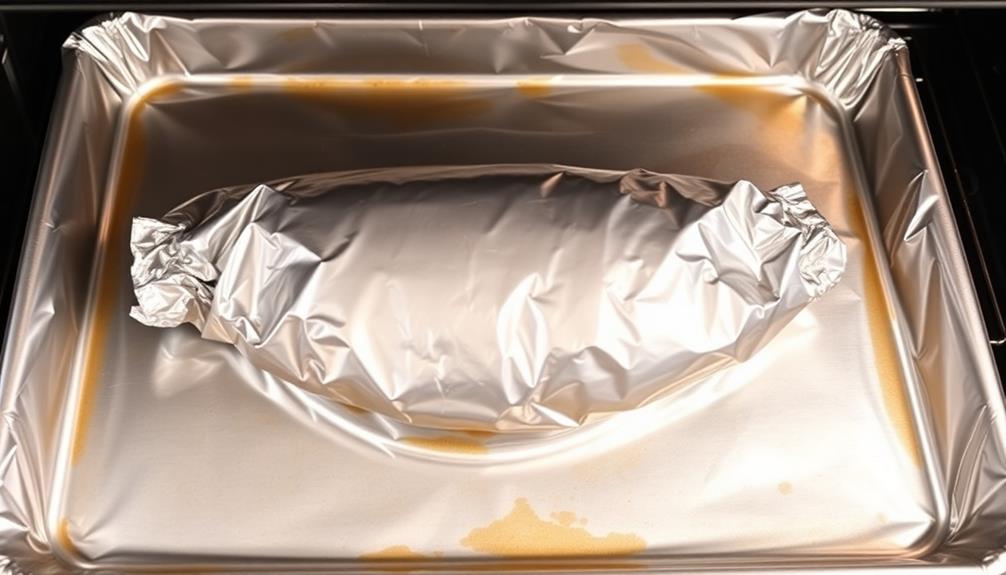
Alternatively, you can wrap the monkfish liver in aluminum foil before baking. This method helps to retain moisture and prevent the liver from drying out during the cooking process.
Start by arranging the monkfish liver on a sheet of heavy-duty aluminum foil. Season the liver with your desired spices, such as salt, pepper, and any other aromatics like garlic or shallots. Fold the foil over the liver, creating a sealed packet. Be sure to crimp the edges tightly to prevent any leaks.
Place the foil-wrapped monkfish liver on a baking sheet and transfer it to a preheated oven at 375°F (190°C). Bake the liver for 20-25 minutes, or until it's cooked through and tender. The internal temperature should reach at least 145°F (63°C).
Carefully remove the foil packet from the oven, allowing the steam to escape. Unwrap the liver and serve it warm, either on its own or as part of a larger dish. The gentle baking ensures the monkfish liver remains moist and flavorful.
Step 5. Allow to Cool Completely
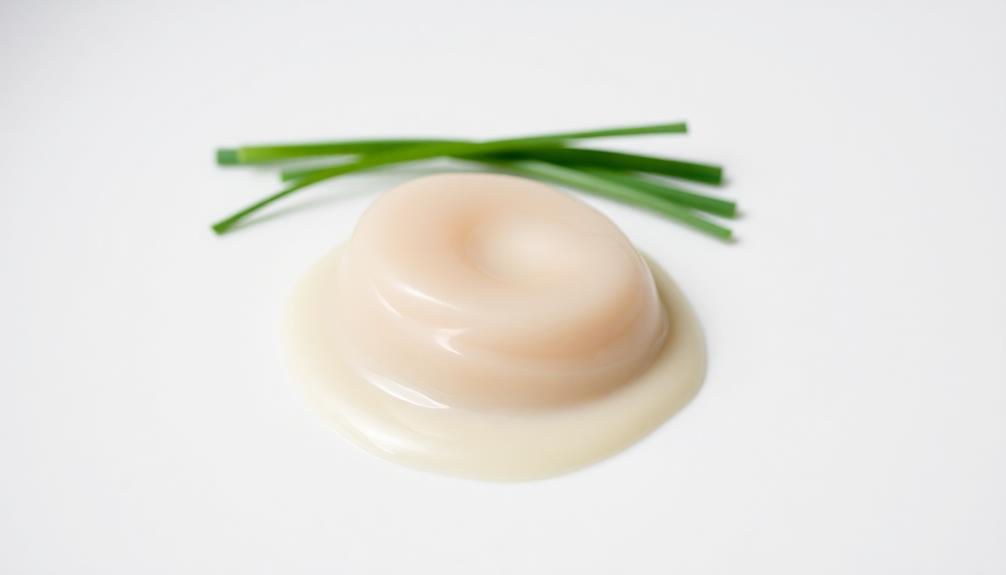
After baking the monkfish liver, let it cool completely before serving or handling further. This cooling process is crucial to allow the pâté to set and firm up properly. Depending on the size of your dish, it may take anywhere from 30 minutes to an hour for the monkfish liver to reach room temperature.
Once it's cooled, you can carefully remove the foil wrap. The pâté should hold its shape and be firm to the touch. If it's still soft or gooey, let it cool a bit longer. Avoid cutting or slicing the pâté until it's completely cooled, as this can disrupt the delicate texture.
After cooling, you can serve the ankimo pâté as an elegant appetizer, garnished with fresh herbs, lemon wedges, or your favorite accompaniments.
Alternatively, you can refrigerate the cooled pâté for up to 3-4 days, covered, until ready to serve. Just be sure to bring it back to room temperature before serving for the best flavor and texture.
Final Thoughts
Ankimo, the delicate monkfish liver pâté, offers a captivating dining experience that lingers long after the last bite. The soft, silky texture and rich, umami-forward flavor make it a true delight for the senses. Whether enjoyed as an elegant appetizer or a decadent treat, this unique Japanese delicacy is sure to impress your guests. And for those looking to add a tangy twist to their ankimo experience, pairing it with pickled plum benefits both the taste and digestion. The sourness of the plum complements the richness of the liver, while also providing probiotic benefits for gut health. Overall, ankimo with pickled plum is a culinary experience that is both indulgent and nourishing.
While the preparation may seem daunting, the end result is well worth the effort. With a little patience and attention to detail, you'll be able to craft a pâté that perfectly balances the natural sweetness of the monkfish liver with aromatic seasonings.
Serve it chilled, alongside crisp crackers or slices of crusty bread, and let the flavors melt in your mouth.
Embracing the art of Ankimo is a culinary journey that celebrates the beauty of simplicity and the power of high-quality ingredients. Savor each bite, and let this remarkable pâté transport you to the depths of the sea and the heights of gastronomic excellence.
